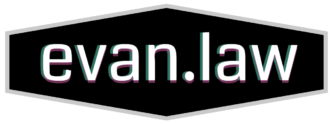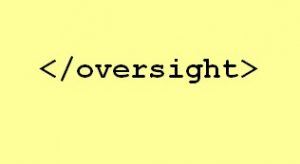 A digital photo’s EXIF data can reveal where the photo was taken. This has created some interesting scenarios in the past. Consider Vice.com’s inadvertent revealing of John McAfee’s location in Central America, a cleavage pic of a hacker’s girlfriend leading to the hacker’s arrest, and MythBusters host Adam Savage disclosing where he lived from a photo he posted on TwitPic.
A digital photo’s EXIF data can reveal where the photo was taken. This has created some interesting scenarios in the past. Consider Vice.com’s inadvertent revealing of John McAfee’s location in Central America, a cleavage pic of a hacker’s girlfriend leading to the hacker’s arrest, and MythBusters host Adam Savage disclosing where he lived from a photo he posted on TwitPic.
In this case, a photo’s EXIF data led to the arrest of an admitted child pornographer.
Defendant took a pornographic image of a 4-year-old girl with his iPhone and used TOR to upload the image to the web. Federal agents analyzed the photo’s EXIF data to determine the GPS coordinates of where defendant took the photo. Agents went to a home near the coordinates. The residents of that home sent the agents to a home about 100 feet away — within the iPhone’s GPS range of error — that belonged to defendant, a registered sex offender.
When the agents visited defendant’s home, he let them enter and later admitted to taking the photo. He then consented to a search, and the agents found child pornography. Defendant was arrested and indicted in federal court in Texas.
Defendant moved to supress the EXIF data as evidence, arguing that law enforcement’s seizure and use of the data violated his Fourth Amendment rights. The court denied the motion.
It rejected defendant’s attempt to “split” his privacy interests between the photo itself and its metadata. Defendant conceded he had no legitimate Fourth Amendment expectation of privacy in the photo — after all, he put it on the web. But as for the metadata, he argued that he retained a privacy interest because he did not realize that he was releasing the information and he intended to remain anonymous.
The court looked to the application of DNA technology to support its conclusion that once defendant left the image in a public place, he had no privacy interest in the metadata:
Assume a defendant left an article of his clothing at a crime scene in 1981. At the time, the defendant had no idea that years later crime labs would be able to conduct DNA analysis of hairs present on that clothing. And in leaving the clothing, he certainly intended to do so “anonymously.” On those grounds, would the defendant be able to suppress the results of the DNA analysis? Of course not, because he left the clothing in a public place and lost any expectation of privacy he had in it, regardless of how he contemplated that clothing could be used.
The court distinguished the holding of this case from the current NSA metadata-collection controversy:
Whatever the ultimate outcome of that issue in higher courts, whether an individual lacks a privacy interest in dialed numbers because those numbers are necessarily disclosed to his phone company is a much different question than whether an individual loses his privacy interest in an item because he voluntarily makes it publicly available on the internet.
It also distinguished this situation from those cases dealing with a defendant’s Fourth Amendment rights in his cell phone and its contents. In those cases, observed the court, the defendant clearly has a privacy interest in his cell phone and its contents. The issue there is whether the justifications that overcome that privacy interest and allow for warrantless seizure of the phone also support warrantless search of its contents. The defendant in this case, by contrast, had no cognizable privacy interest that the government needed to overcome to justify searching for metadata in the photo he placed on the web.
U.S. v. Post, 2014 WL 345992 (S.D.Tex. January 30, 2014)
 Does an online service provider forfeit the safe harbor protections of the Digital Millennium Copyright Act if, when terminating the account of a repeat infringer, it does not delete all content the repeat infringer uploaded — infringing and noninfringing alike? A recent decision involving the antique internet technology Usenet sheds light on an answer.
Does an online service provider forfeit the safe harbor protections of the Digital Millennium Copyright Act if, when terminating the account of a repeat infringer, it does not delete all content the repeat infringer uploaded — infringing and noninfringing alike? A recent decision involving the antique internet technology Usenet sheds light on an answer. 
 Plaintiff sued a construction company and certain municipal authorities for negligence and loss of parental consortium after her toddler son was seriously injured in front of a construction site. Defendants sought broad discovery from plaintiff’s Facebook account, to which plaintiff objected in part. But the trial court required plaintiff to answer the discovery. So plaintiff sought review with the appellate court. On appeal, the court overturned the trial court.
Plaintiff sued a construction company and certain municipal authorities for negligence and loss of parental consortium after her toddler son was seriously injured in front of a construction site. Defendants sought broad discovery from plaintiff’s Facebook account, to which plaintiff objected in part. But the trial court required plaintiff to answer the discovery. So plaintiff sought review with the appellate court. On appeal, the court overturned the trial court. 
 A digital photo’s
A digital photo’s 


 Defendant resigned from his job with an IT consulting firm. One of the firm’s customers hired defendant as an employee. Before the customer/new employer terminated the agreement with the IT consulting firm/former employer, defendant used the customer/new employer’s credentials to access and copy some scripts from the system. (Having the new employee and the scripts eliminated the need to have the consulting firm retained.) The firm/former employer sued under the
Defendant resigned from his job with an IT consulting firm. One of the firm’s customers hired defendant as an employee. Before the customer/new employer terminated the agreement with the IT consulting firm/former employer, defendant used the customer/new employer’s credentials to access and copy some scripts from the system. (Having the new employee and the scripts eliminated the need to have the consulting firm retained.) The firm/former employer sued under the  The Hollywood Reporter
The Hollywood Reporter 